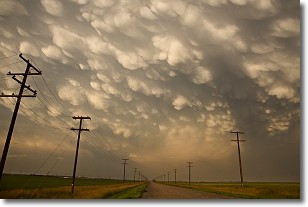Weather Alert in Montana
Hydrologic Outlook issued August 25 at 4:54PM MDT by NWS Great Falls MT
AREAS AFFECTED: Beaverhead, MT; Broadwater, MT; Cascade, MT; Gallatin, MT; Jefferson, MT; Lewis and Clark, MT; Madison, MT; Meagher, MT
DESCRIPTION: ESFTFX Monsoon moisture will slowly move northward and bring periods of widespread rain and embedded thunderstorms to Southwest and portions of Central Montana Tuesday night through Friday. Localized heavier downpours in excess of a half inch per hour can be expected with the heavier cells in addition to the general four day storm totals between a quarter to an inch and a half. The most persistent and heaviest rainfall is expected along and south of I90 on Wednesday and Thursday. Impacts will mostly be limited to sensitive burn scars or other normally flood prone locations or areas of steep terrain and may include instances of localized flooding, debris flows, and rock slides. Those considering any backcountry travel for Wednesday and Thursday of this week should be prepared for periods of excessive rainfall, muddy roads, and potential localized flooding.
INSTRUCTION: N/A
Want more detail? Get the Complete 7 Day and Night Detailed Forecast!
Current U.S. National Radar--Current
The Current National Weather Radar is shown below with a UTC Time (subtract 5 hours from UTC to get Eastern Time).

National Weather Forecast--Current
The Current National Weather Forecast and National Weather Map are shown below.

National Weather Forecast for Tomorrow
Tomorrow National Weather Forecast and Tomorrow National Weather Map are show below.

North America Water Vapor (Moisture)
This map shows recent moisture content over North America. Bright and colored areas show high moisture (ie, clouds); brown indicates very little moisture present; black indicates no moisture.

Weather Topic: What are Mammatus Clouds?
Home - Education - Cloud Types - Mammatus Clouds
 Next Topic: Nimbostratus Clouds
Next Topic: Nimbostratus Clouds
A mammatus cloud is a cloud with a unique feature which resembles
a web of pouches hanging along the base of the cloud.
In the United States, mammatus clouds tend to form in the warmer months, commonly
in the Midwest and eastern regions.
While they usually form at the bottom of a cumulonimbis cloud, they can also form
under altostratus, altocumulus, stratocumulus, and cirrus clouds. Mammatus clouds
warn that severe weather is close.
Next Topic: Nimbostratus Clouds
Weather Topic: What is Precipitation?
Home - Education - Precipitation - Precipitation
 Next Topic: Rain
Next Topic: Rain
Precipitation can refer to many different forms of water that
may fall from clouds. Precipitation occurs after a cloud has become saturated to
the point where its water particles are more dense than the air below the cloud.
In most cases, precipitation will reach the ground, but it is not uncommon for
precipitation to evaporate before it reaches the earth's surface.
When precipitation evaporates before it contacts the ground it is called Virga.
Graupel, hail, sleet, rain, drizzle, and snow are forms of precipitation, but fog
and mist are not considered precipitation because the water vapor which
constitutes them isn't dense enough to fall to the ground.
Next Topic: Rain
Current conditions powered by WeatherAPI.com




